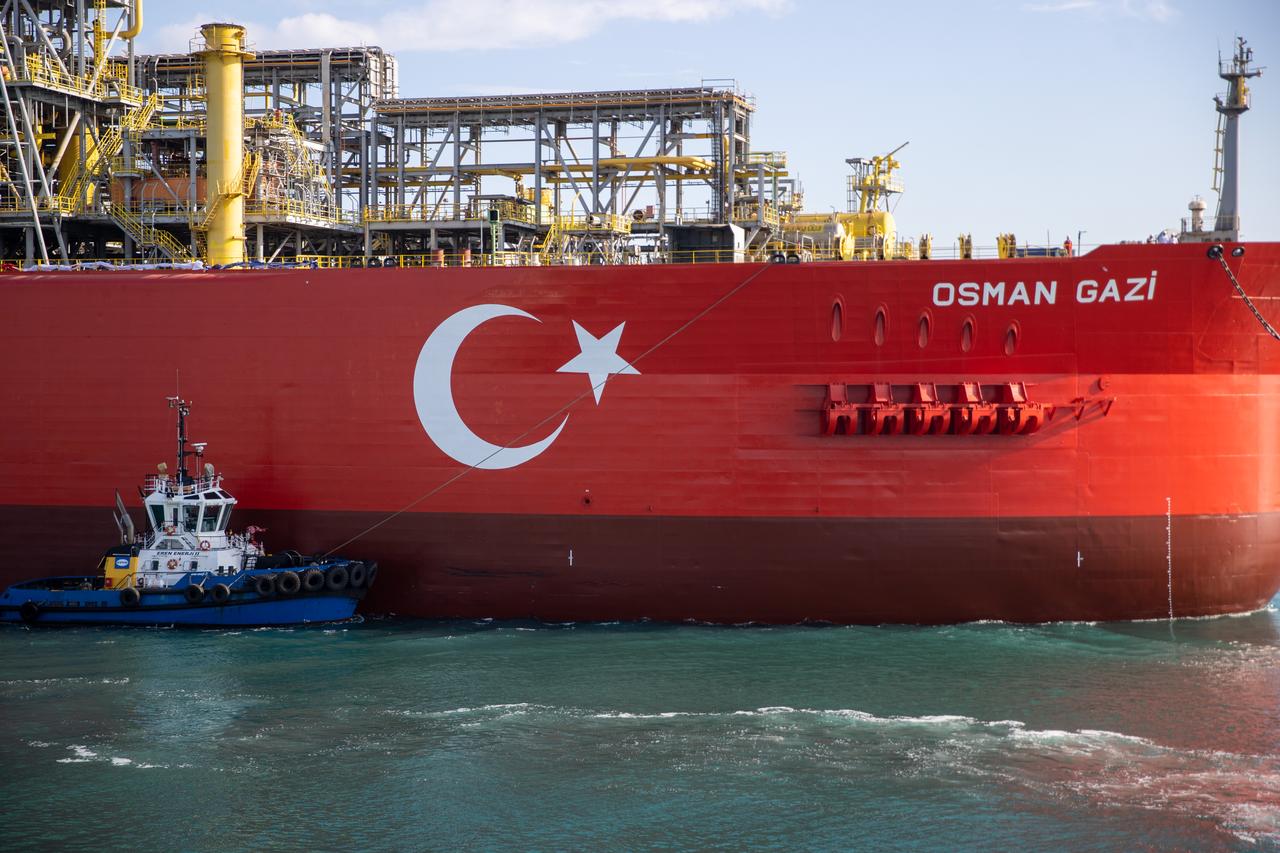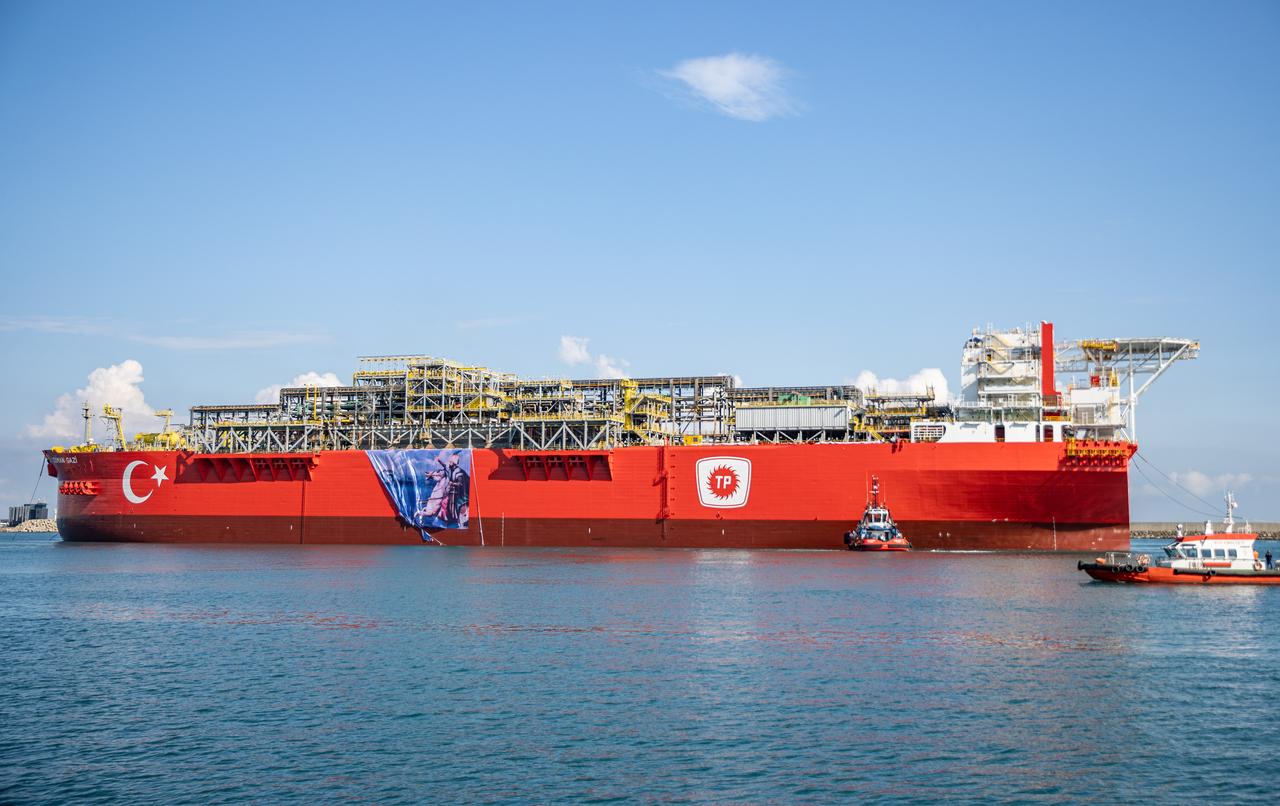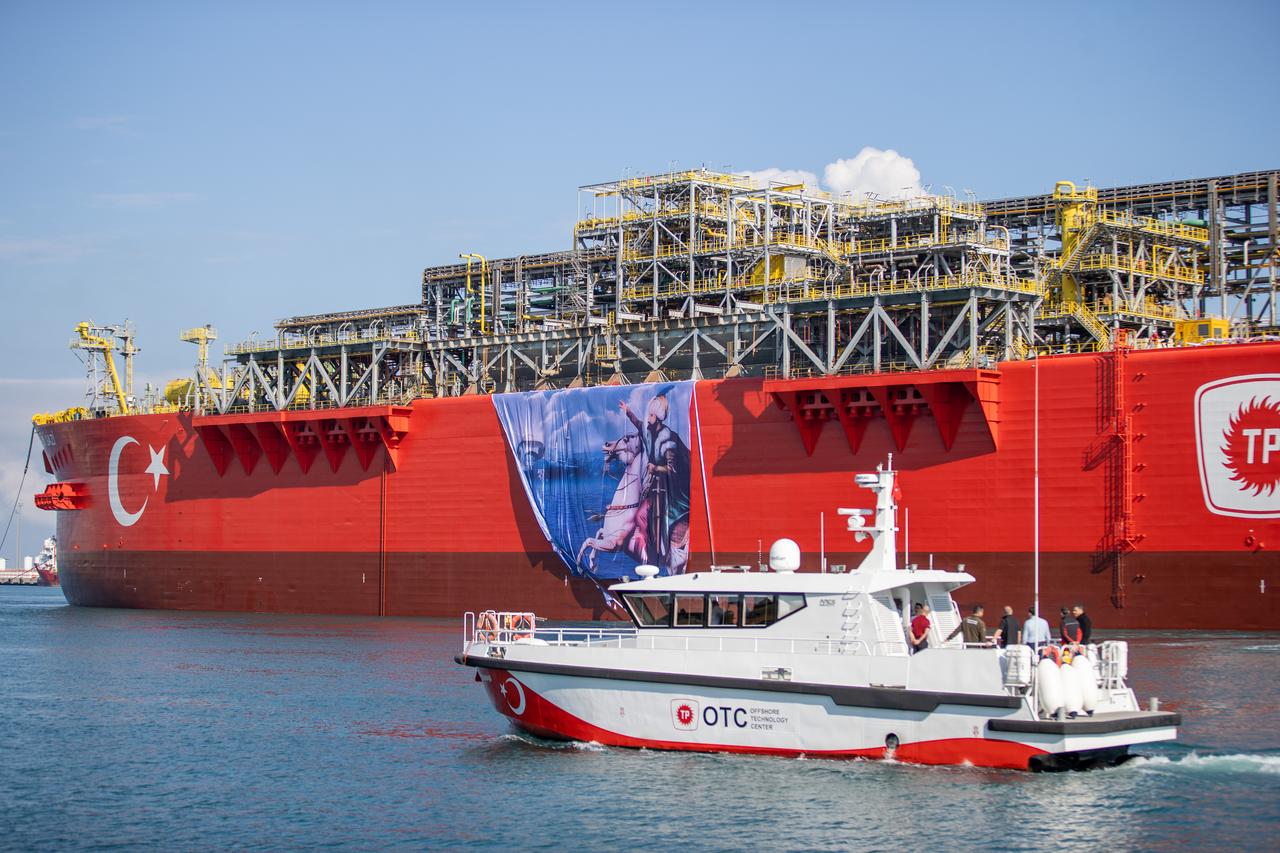
Turkish Energy and Natural Resources Minister Alparslan Bayraktar announced that Türkiye will add a second floating natural gas production platform by 2028, describing it as a "sister" to the newly arrived Osman Gazi platform.
"A sister will come to Osman Gazi. In 2028, we will have a new floating production platform," Bayraktar stated during an AK Party Provincial Advisory Council meeting in Eskisehir.
The announcement came as Türkiye's first floating natural gas production platform, Osman Gazi, arrived Saturday at Filyos Port in Zonguldak on the Black Sea coast, marking a new era in the country's domestic energy production capabilities.

The massive Osman Gazi platform was ceremonially launched from the Presidential Dolmabahce Office in Istanbul on May 29—the 572nd anniversary of Istanbul's conquest—in a ceremony attended by President Erdogan and the energy minister, before passing through the Istanbul Strait.
The platform measures 298.5 meters long, 56 meters wide, and 29.5 meters deep, with the capacity to accommodate 140 personnel for continuous operations.
With a maximum processing capacity of 10.5 million cubic meters of natural gas per day and a transfer capacity of 10 million cubic meters, the platform will double natural gas production in the Black Sea to 20 million cubic meters daily.

Bayraktar emphasized Türkiye's growing maritime capabilities, noting that the country currently possesses the world's sixth-largest naval fleet and aims to enter the top four rankings soon.
"Türkiye has one of the world's most modern naval fleets. The world's 6th largest fleet is in Türkiye. We will enter the top 4 very soon," the minister declared.
With a maximum processing capacity of 10.5 million cubic meters of natural gas per day and a transfer capacity of 10 million cubic meters, the platform will double natural gas production in the Black Sea to 20 million cubic meters daily.
It is expected to meet the natural gas needs of about 8 million households in Türkiye and will operate at the site for 20 years.
The platform, which can accommodate 140 personnel, measures 298.5 meters long, 56 meters wide, and 29.5 meters deep.
It is expected to begin operations by mid-2026.